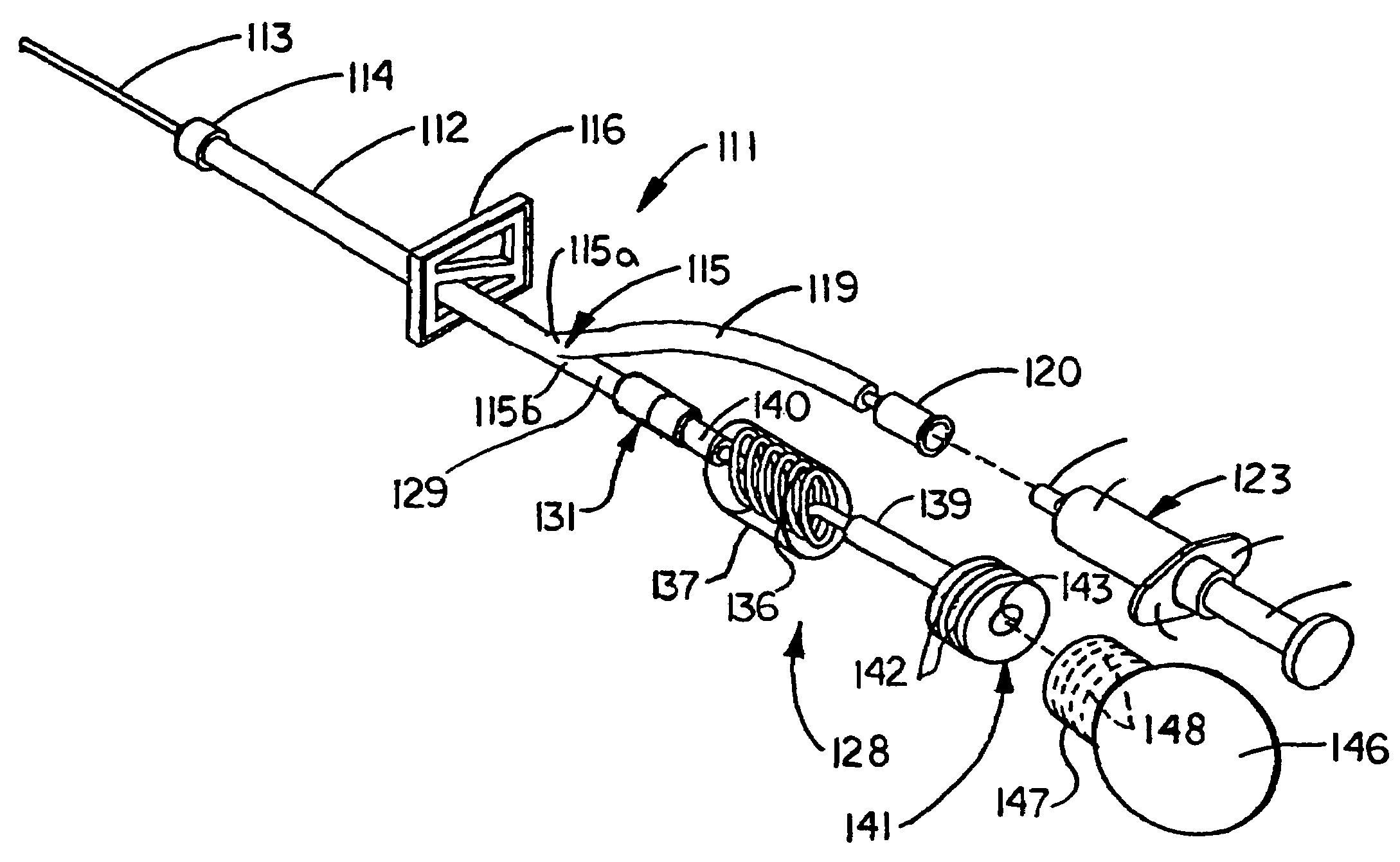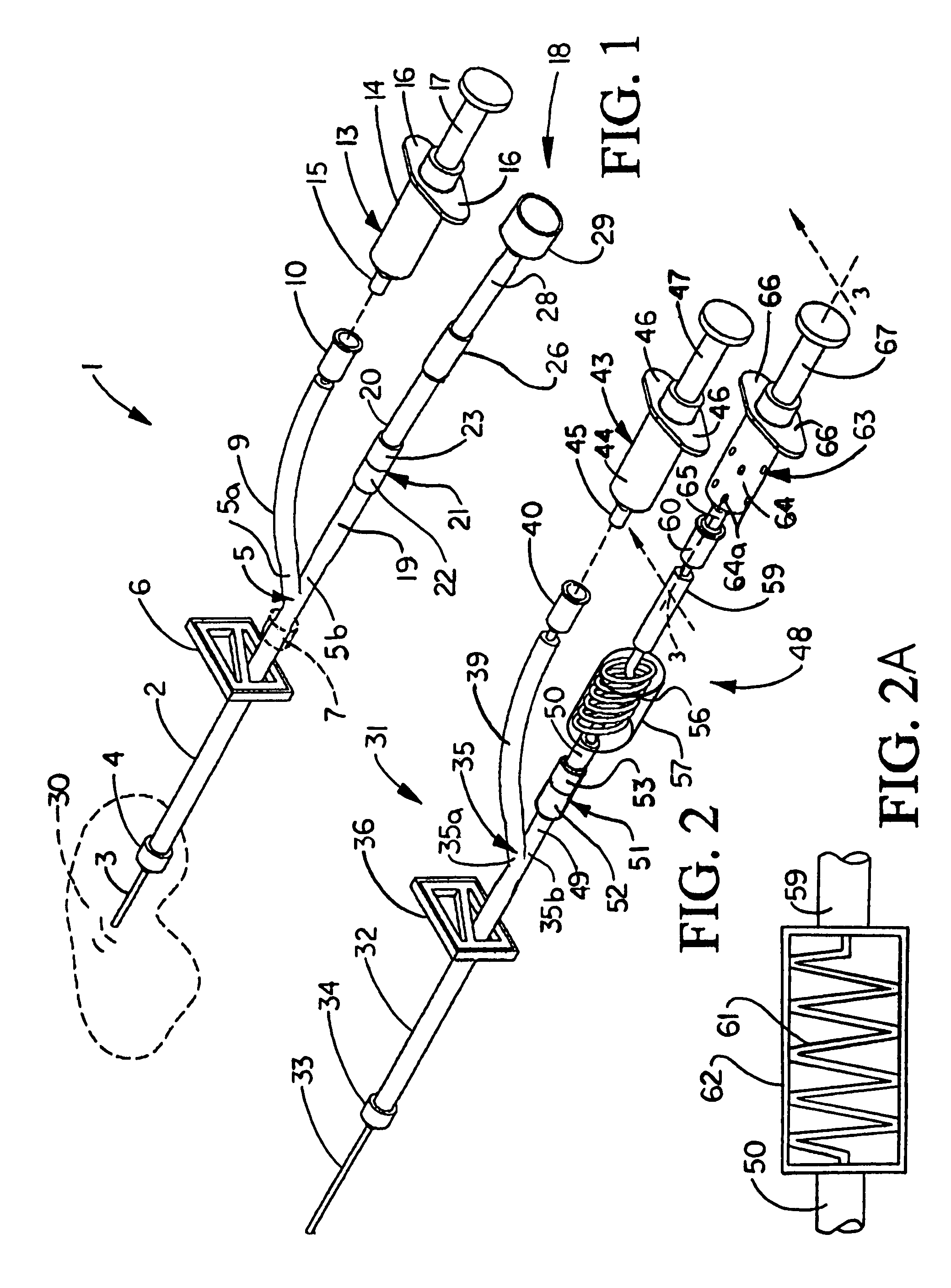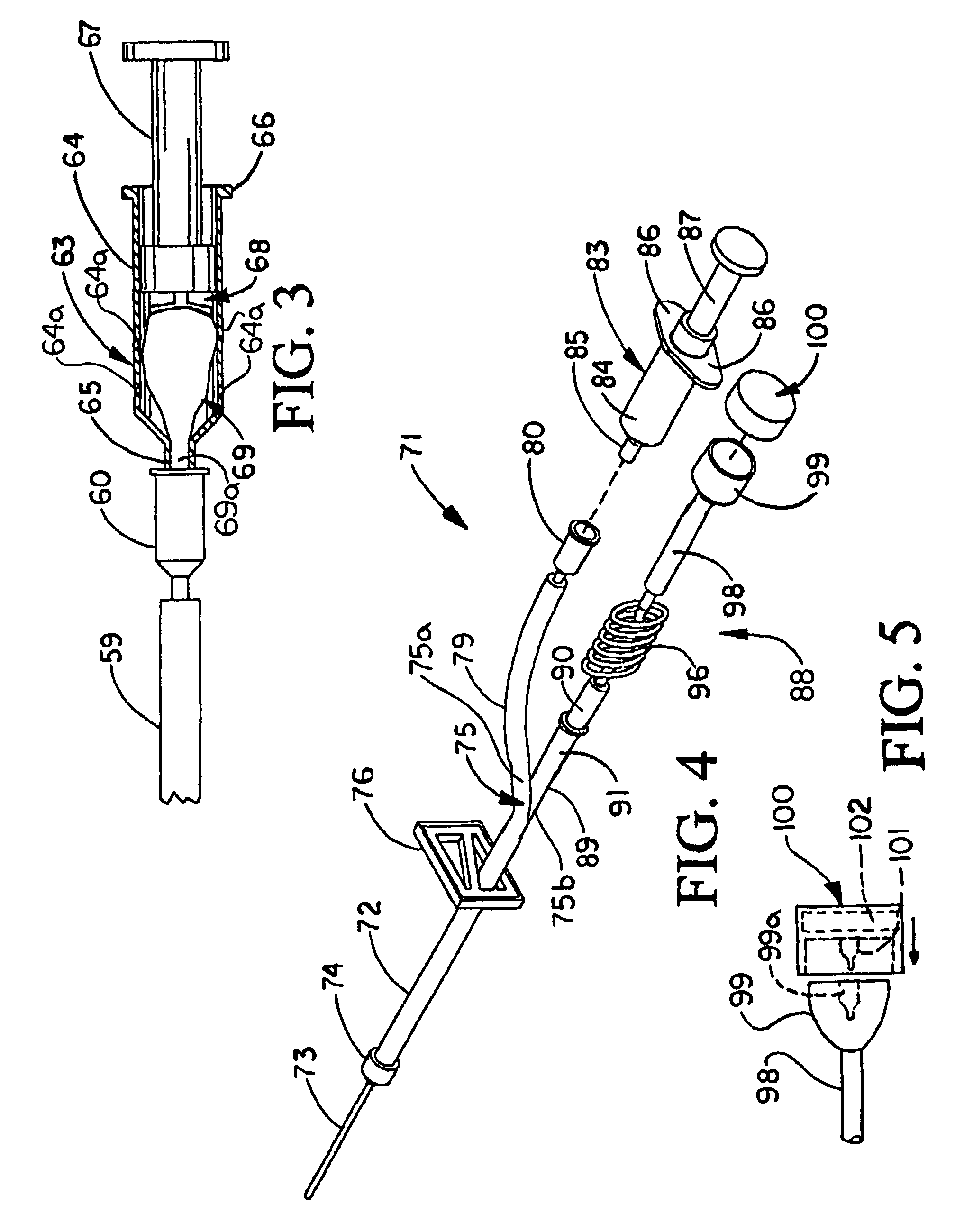Devices for collecting blood and administering medical fluids
a technology for medical fluids and devices, applied in the field of devices for collecting blood and administering medical fluids, can solve the problems of increasing the risk of infection, affecting the patient's comfort, and reducing the ability of medical personnel to be pricked, so as to facilitate the active flow of blood and prevent vacuum-induced vein collapse
- Summary
- Abstract
- Description
- Claims
- Application Information
AI Technical Summary
Benefits of technology
Problems solved by technology
Method used
Image
Examples
Embodiment Construction
[0018]Referring initially to FIG. 1 of the drawings, an illustrative embodiment of the device for collecting blood and administering medical fluids, hereinafter “device”, of the present invention is generally indicated by reference numeral 1. The device 1 includes a main tubing segment 2 which is typically a flexible material. A hub 4 of a cannula 3 is threadibly or otherwise attached to the main tubing segment 2. A tubing bifurcation 5 is provided in the end of the main tubing segment 2 which is opposite or distal to the cannula 3, and the tubing bifurcation S may be continuous with or a separate element with respect to the main tubing segment 2. A tubing clamp 6 is provided on the main tubing segment 2 between the cannula hub 4 and the tubing bifurcation 5. The tubing clamp 6 may be any type of clamp which is capable of facilitating selective and reversible blocking of the flow of fluids through the main tubing segment 2. The tubing clamp 6 is preferably capable of one-handed oper...
PUM
| Property | Measurement | Unit |
|---|---|---|
| volume | aaaaa | aaaaa |
| volume | aaaaa | aaaaa |
| permeable | aaaaa | aaaaa |
Abstract
Description
Claims
Application Information
 Login to View More
Login to View More - R&D
- Intellectual Property
- Life Sciences
- Materials
- Tech Scout
- Unparalleled Data Quality
- Higher Quality Content
- 60% Fewer Hallucinations
Browse by: Latest US Patents, China's latest patents, Technical Efficacy Thesaurus, Application Domain, Technology Topic, Popular Technical Reports.
© 2025 PatSnap. All rights reserved.Legal|Privacy policy|Modern Slavery Act Transparency Statement|Sitemap|About US| Contact US: help@patsnap.com



